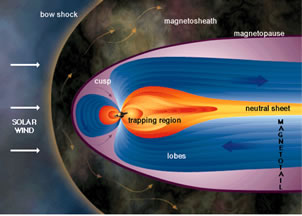This is a drawing of the magnetosphere of Saturn.
Click on image for full size
A Look at Saturn's Magnetosphere
Saturn's magnetosphere is not as big as Jupiter's, but it is still pretty big.
It is big enough to hold all of Saturn's moons.
It is probably made
the same way as is Jupiter's, which affects its overall shape and structure. The shape is also affected by the fact that Saturn's moon Titan does not contribute a very large cloud to the magnetosphere.
The rings of Saturn definitely affect the motion of particles in the magnetosphere.
Saturn's magnetosphere produces beautiful aurora, as well as strong radio signals and other waves, such as whistler waves.
You might also be interested in:
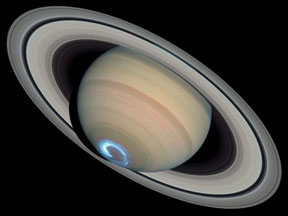
Have you ever seen the Southern or Northern Lights? Earth isn't the only planet that puts on these beautiful light shows, which are also called the "aurora". Aurora have been seen at both poles of Saturn,
...more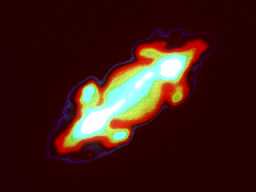
Radio signals are a sign of activity within the magnetosphere. There are two kinds of waves in the Saturn environment; Saturn Kilometric Radiation (SKR), and Saturn Electrostatic Discharges (SED). SKR
...more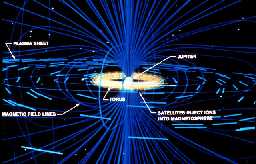
Saturn's plasmasphere is pretty big. Most of the plasma comes from the donut-shaped cloud of material from Titan and the other icy moons. Besides ions and electrons, the plasmasphere also contains very
...more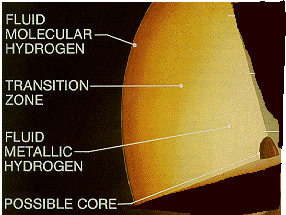
The first liquid layer inside Saturn, right under the atmosphere, is the liquid hydrogen layer. The hydrogen atmosphere becomes thicker and thicker, like a dense fog, with more and more liquid droplets,
...more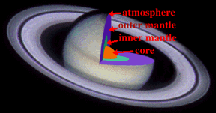
The Giant planets do not have the same layered structure that the terrestrial planets do. Their evolution was quite different than that of the terrestrial planets, and they have less solid material. Saturn's
...more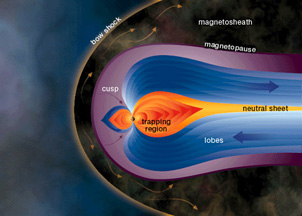
A magnetometer is an instrument for measuring magnetic fields. Many spacecraft carry magnetometers to measure the magnetic fields around planets. When a spacecraft makes those measurements, what do the
...more
There's a lot of strange and interesting stuff going on at both the North and South Poles of Saturn. Two of Saturn's moons also have interesting polar regions. Let's take a look! The atmosphere and clouds
...more


